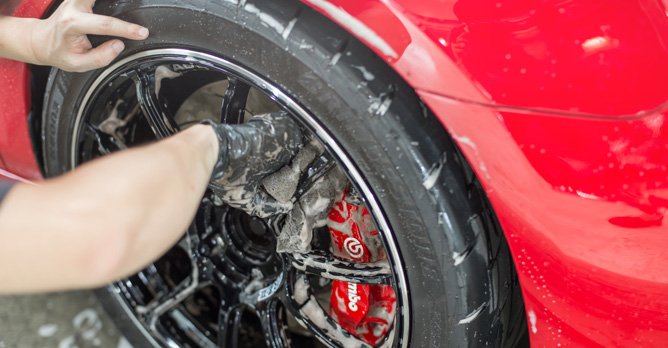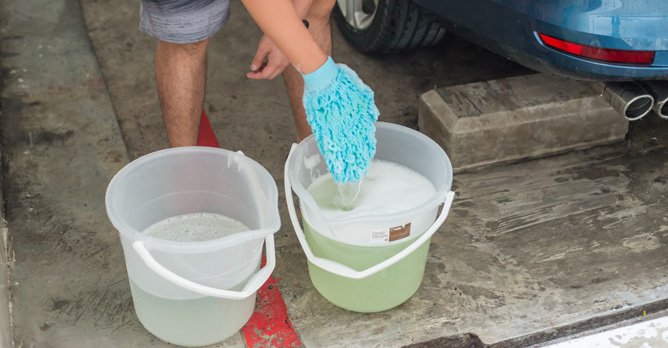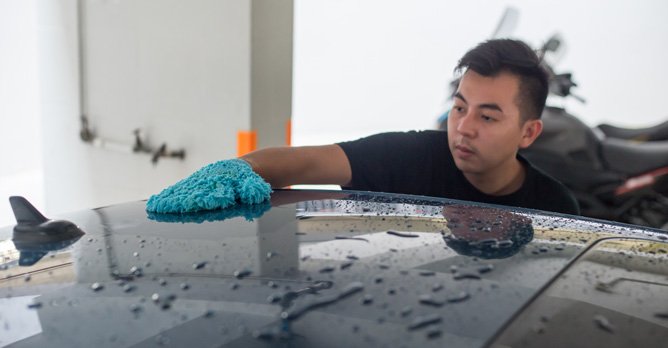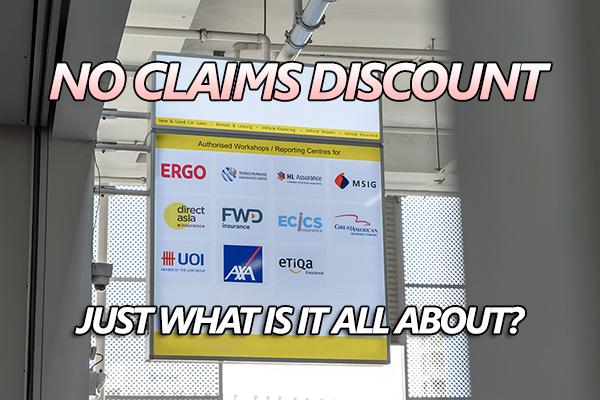How to avoid scratches when detailing your car
20 Jun 2022|10,642 views
The weekend has finally arrived and you're all set to give your car some much needed TLC. For the past five days, it has sat in traffic, weathered thunderstorms and accumulated a fair amount of dirt.
So, you prepare your kit. Products, applicators and microfibre cloths are at the ready. Your wash bucket, car shampoo and loose change (for the water) are good to go.
But don't just jump right into it. Here are a few tips that can help you avoid scratching your paint while detailing your pride and joy.
Use the two-bucket method
Most folks use a single bucket to wash their car, but using two buckets can save your paintwork from those unsightly scratch and swirl marks.
One bucket is filled with water and car shampoo, while the other contains clean water. After dipping your wash mitt into the shampoo bucket and cleaning a portion of your car body, you rinse the mitt in the other bucket before continuing the wash.
This gets rid of the dirt and grit that the wash mitt picked up, so that it's as clean (as can be) before you continue the process. If you can add a grit guard into each bucket, so much the better.
Wash from top to bottom
This one is pretty easy to remember.
Wash your vehicle from the roof downwards in a systematic manner. Most of the dirt on your car is located on the lower body panels, so you should never start there.
If you do, you risk marring other areas of the paintwork.
That said, it is always prudent to scrub the wheels and tyres before washing the car, as you wouldn't want to risk flinging brake dust and metallic particles on your clean car body.
Keep your mitts clean and don't use sponges

They only get a quick rinse between customer cars, and it is unlikely that they'll be given a proper wash at the end of the day.
Meanwhile, sponges are not ideal for car washing as they tend to trap and hold dirt and grit, which will obviously lead to scratches and swirls.
Try to loosen large particles first

If you have a portable foam gun, use it to cover your car with some nice 'snow'. Leave it on for a few minutes so it can soften and/or loosen any contaminants, which can then be safely rinsed away before the actual wash begins.
If you don't have a foam gun/cannon, a quick detailer can also be used to soften contaminants prior to washing. Quick detailers are formulated to trap particles and provide lubricity, thereby reducing the risk of scratches.
Use clay to remove embedded pollutants

Embedded contaminants require the use of automotive clay bars and a lubricating spray.
Follow the directions and don't forget to fold the clay bar once it feels rough. If you accidentally drop it, toss it in the dustbin as the clay would have collected dirt on the ground that could scratch your car.
Claying your car leaves the paintwork clean and bare, so that your polish becomes more effective, while the wax can bond properly with the clear coat for best results.
That's it. Happy detailing!
Keen to learn more? Perhaps these stories will interest you:
How to detail your car engine bay like a pro detailer
DIY car detailing: How to choose the best products for every inch of your car
How to maintain your ceramic coating
Car detailing services you should consider besides a regular car wash
The weekend has finally arrived and you're all set to give your car some much needed TLC. For the past five days, it has sat in traffic, weathered thunderstorms and accumulated a fair amount of dirt.
So, you prepare your kit. Products, applicators and microfibre cloths are at the ready. Your wash bucket, car shampoo and loose change (for the water) are good to go.
But don't just jump right into it. Here are a few tips that can help you avoid scratching your paint while detailing your pride and joy.
Use the two-bucket method
Most folks use a single bucket to wash their car, but using two buckets can save your paintwork from those unsightly scratch and swirl marks.
One bucket is filled with water and car shampoo, while the other contains clean water. After dipping your wash mitt into the shampoo bucket and cleaning a portion of your car body, you rinse the mitt in the other bucket before continuing the wash.
This gets rid of the dirt and grit that the wash mitt picked up, so that it's as clean (as can be) before you continue the process. If you can add a grit guard into each bucket, so much the better.
Wash from top to bottom
This one is pretty easy to remember.
Wash your vehicle from the roof downwards in a systematic manner. Most of the dirt on your car is located on the lower body panels, so you should never start there.
If you do, you risk marring other areas of the paintwork.
That said, it is always prudent to scrub the wheels and tyres before washing the car, as you wouldn't want to risk flinging brake dust and metallic particles on your clean car body.
Keep your mitts clean and don't use sponges

They only get a quick rinse between customer cars, and it is unlikely that they'll be given a proper wash at the end of the day.
Meanwhile, sponges are not ideal for car washing as they tend to trap and hold dirt and grit, which will obviously lead to scratches and swirls.
Try to loosen large particles first

If you have a portable foam gun, use it to cover your car with some nice 'snow'. Leave it on for a few minutes so it can soften and/or loosen any contaminants, which can then be safely rinsed away before the actual wash begins.
If you don't have a foam gun/cannon, a quick detailer can also be used to soften contaminants prior to washing. Quick detailers are formulated to trap particles and provide lubricity, thereby reducing the risk of scratches.
Use clay to remove embedded pollutants

Embedded contaminants require the use of automotive clay bars and a lubricating spray.
Follow the directions and don't forget to fold the clay bar once it feels rough. If you accidentally drop it, toss it in the dustbin as the clay would have collected dirt on the ground that could scratch your car.
Claying your car leaves the paintwork clean and bare, so that your polish becomes more effective, while the wax can bond properly with the clear coat for best results.
That's it. Happy detailing!
Keen to learn more? Perhaps these stories will interest you:
How to detail your car engine bay like a pro detailer
DIY car detailing: How to choose the best products for every inch of your car
How to maintain your ceramic coating
Car detailing services you should consider besides a regular car wash


















